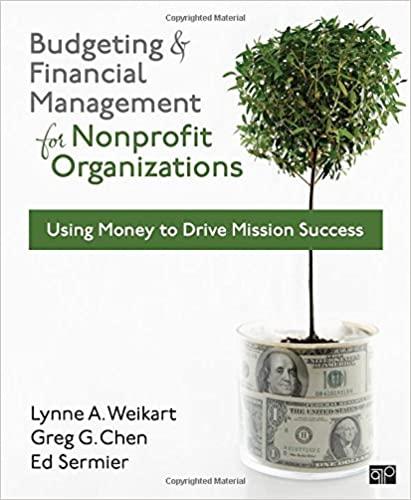Question
In chapter 14, we looked at how to find customer lifetime value for a medical service provider. Lets look at a slightly different example but
In chapter 14, we looked at how to find customer lifetime value for a medical service provider. Lets look at a slightly different example but apply the same tools. This case is about an online bookseller, and in contrast to the example from the text, this retailer doesnt advertise in newspapers. It relies primarily on paid placements in search engines, and it obtains customers through their goal-directed searches for particular titles (e.g., old books or price discounts on new books). Say the costs of these placements are a mere $10000 a year and 2000 customers locate the site through the funded search engines, for a per-customer acquisition cost of $5.00. (Gotta love the Internet!). Customers are notoriously non-loyal to online retailers, especially those providers accessed through search engines or via price comparisons. Thus, retention is a rare thing and each purchase is treated as a new customer. The company has considered various rewards programs but has launched none to date. So retention costs are 50% of acquisition costs. The bookstore has two segments: The first segment buys rare old books. And it is profitable (on average some $2500). The second segment purchases from this retailer because its prices beat other online bookstores. (On average, the margins are $500). For the bookstore, the discount-seeking buyers (Price Shoppers) are not loyal: Retention rates are 70%, 50% and 40% (over the years). And even the rare-book buyers (Old Book) will do some comparison shopping; so their retention is approximately 90%, 70% and 60% over the successive years. On line book purchasers are likely to buy books on and off through their life time. If customers find the website by age 33, on average, their book-buying life span could easily be thirty years or longer. (But for comparison purposes, lets cap it at four, like in the MobiMed example in the chapter. Your 2-page write-up will include the following: 1. Work through the numbers for each segment. Calculate the final CLV for each segment. (Show all calculations) 2. What inferences/conclusions can you draw from the numbers calculated regarding customer relationships and their importance? 3. Comment on the managerial implications of these results. What marketing actions would you recommend for this store?
Step by Step Solution
There are 3 Steps involved in it
Step: 1

Get Instant Access to Expert-Tailored Solutions
See step-by-step solutions with expert insights and AI powered tools for academic success
Step: 2

Step: 3

Ace Your Homework with AI
Get the answers you need in no time with our AI-driven, step-by-step assistance
Get Started


